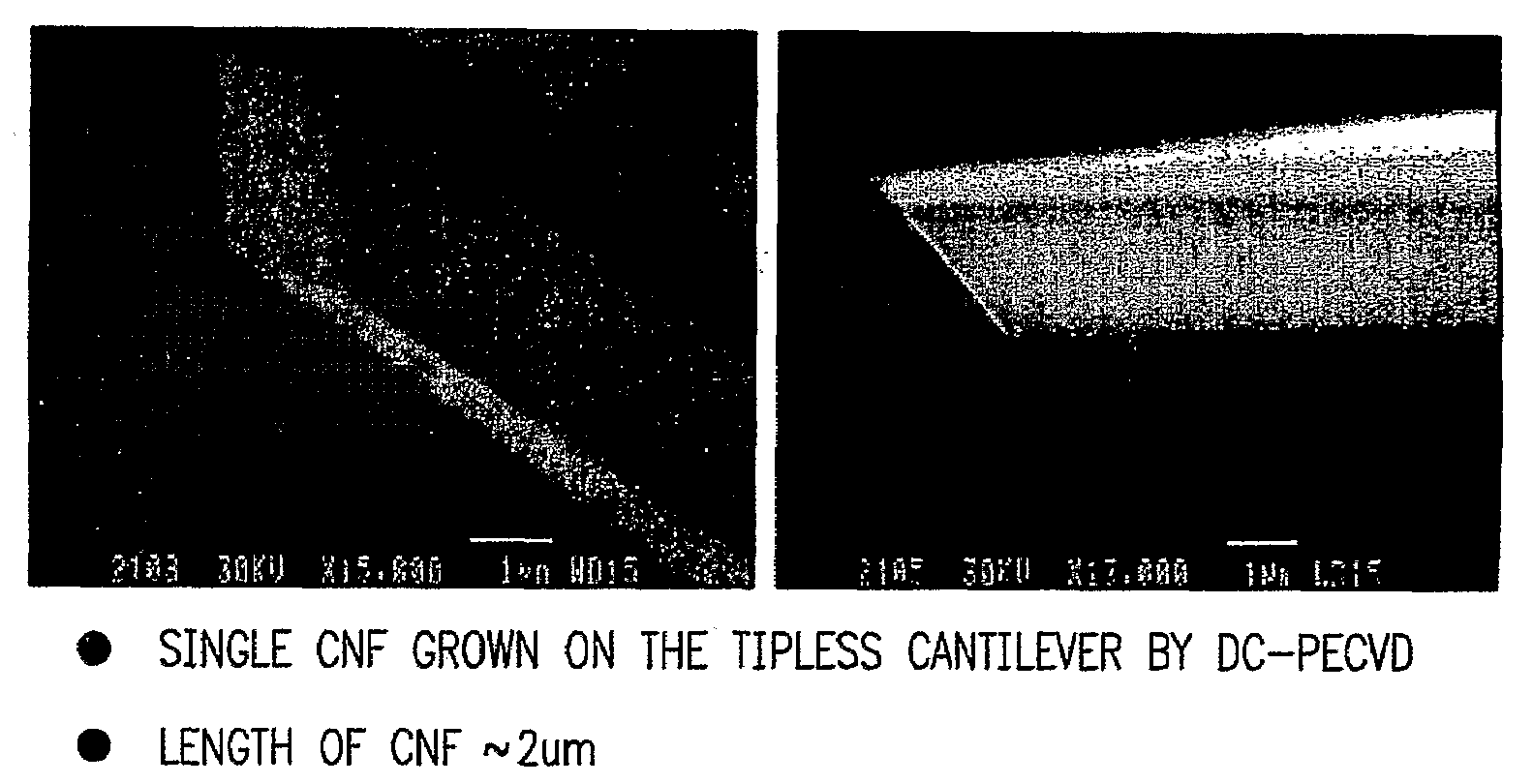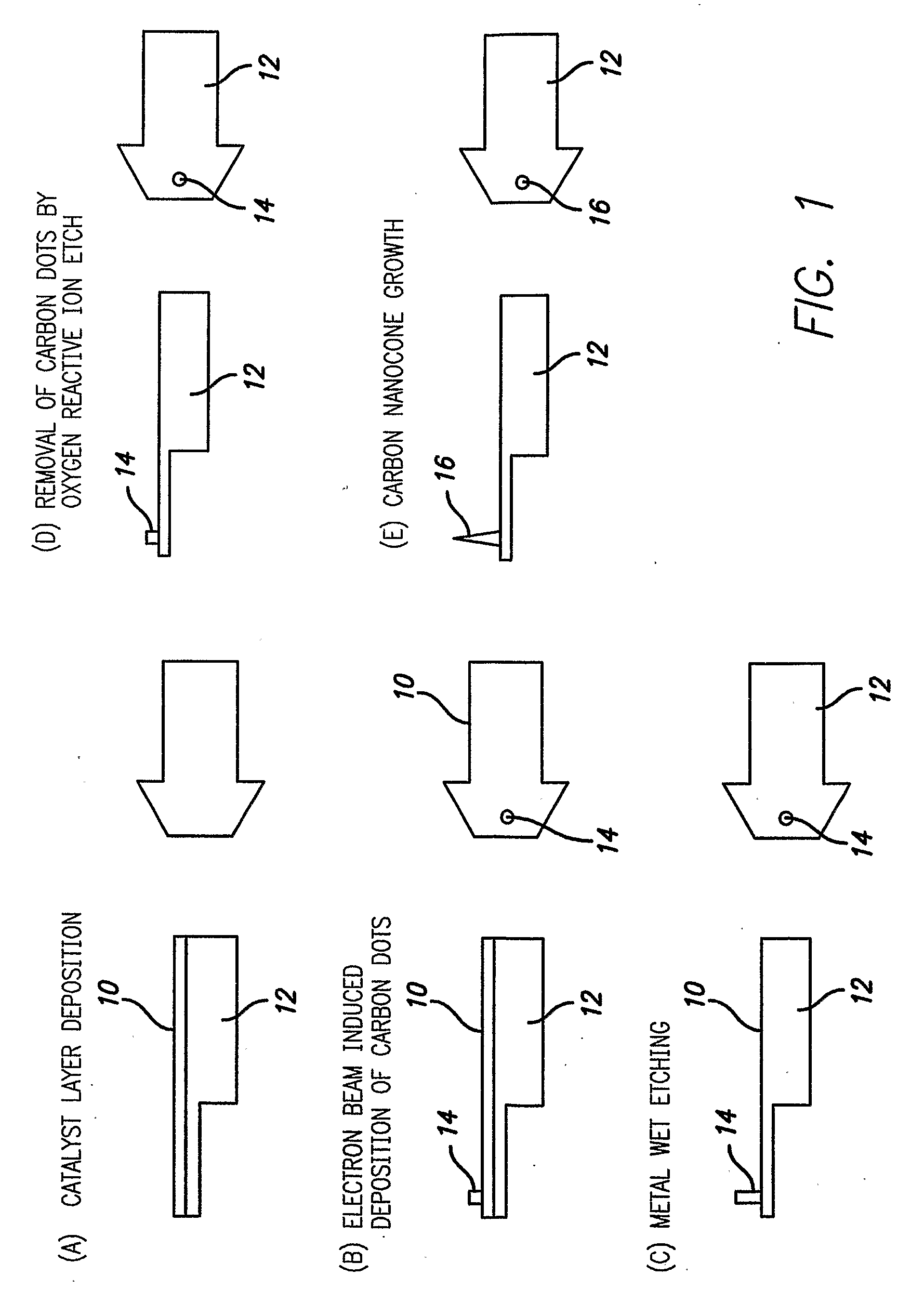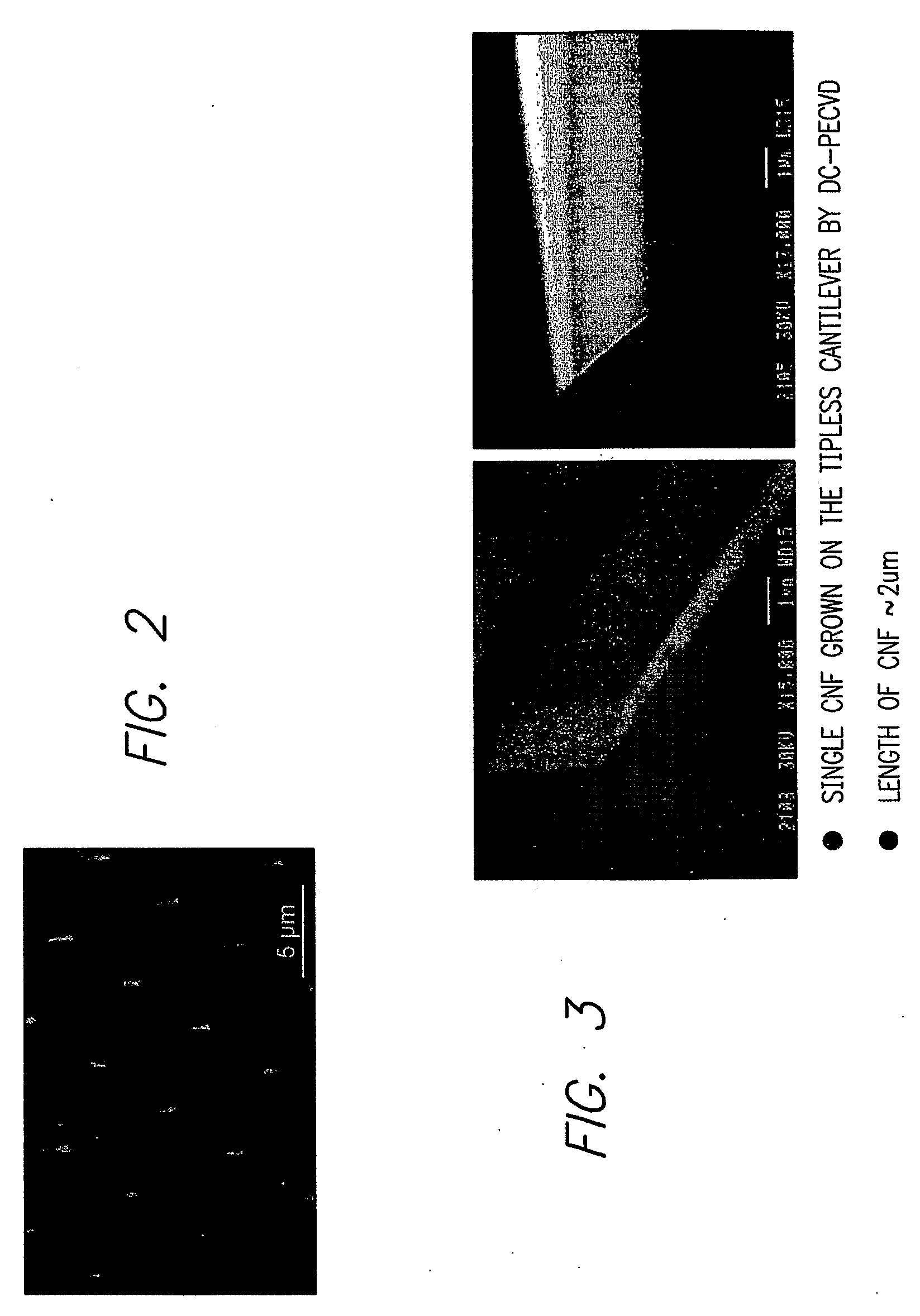Probe System Comprising an Electric-Field-Aligned Probe Tip and Method for Fabricating the Same
a technology of electric field alignment and probe tip, which is applied in the manufacture of electromechanical systems, chemical vapor deposition coatings, record information storage, etc., can solve the problems of limited lateral resolution, difficult access to narrow or deep structural features, and often easily broken or worn out probes, etc., and achieves high spatial resolution.
- Summary
- Abstract
- Description
- Claims
- Application Information
AI Technical Summary
Benefits of technology
Problems solved by technology
Method used
Image
Examples
Embodiment Construction
[0051]The invention and the various features and advantageous details thereof are explained more fully with reference to the exemplary embodiments that are illustrated in the accompanying drawings and detailed in the following description. Descriptions of well known starting materials, processing techniques, components, and equipment are omitted so as not to obscure the invention in detail. It should be understood however, that the detailed description and the specific examples, while indicating preferred embodiments of the invention, are given by way of illustration only and not by way of limitation. Various substitutions, modifications, additions, and / or rearrangements within the spirit and / or scope of the underlying inventive concept will become apparent to those skilled in the art from this disclosure.
[0052]The present invention relates to a novel method of fabricating a single or an array of high-aspect-ratio nanotips on any type of substrate or cantilever, such as Si, Si-nitri...
PUM
| Property | Measurement | Unit |
|---|---|---|
| Length | aaaaa | aaaaa |
| Time | aaaaa | aaaaa |
| Angle | aaaaa | aaaaa |
Abstract
Description
Claims
Application Information
 Login to View More
Login to View More - R&D
- Intellectual Property
- Life Sciences
- Materials
- Tech Scout
- Unparalleled Data Quality
- Higher Quality Content
- 60% Fewer Hallucinations
Browse by: Latest US Patents, China's latest patents, Technical Efficacy Thesaurus, Application Domain, Technology Topic, Popular Technical Reports.
© 2025 PatSnap. All rights reserved.Legal|Privacy policy|Modern Slavery Act Transparency Statement|Sitemap|About US| Contact US: help@patsnap.com



